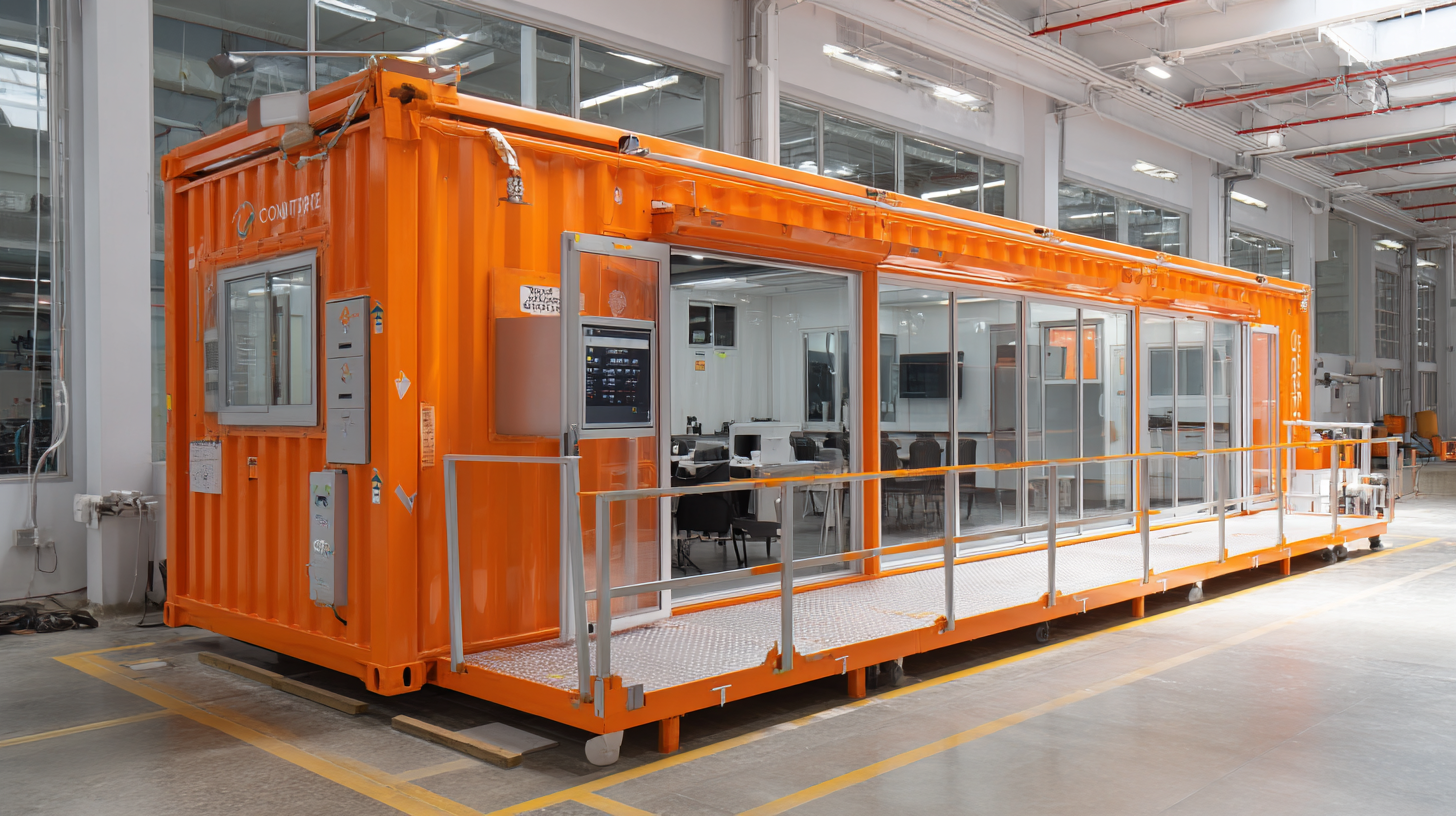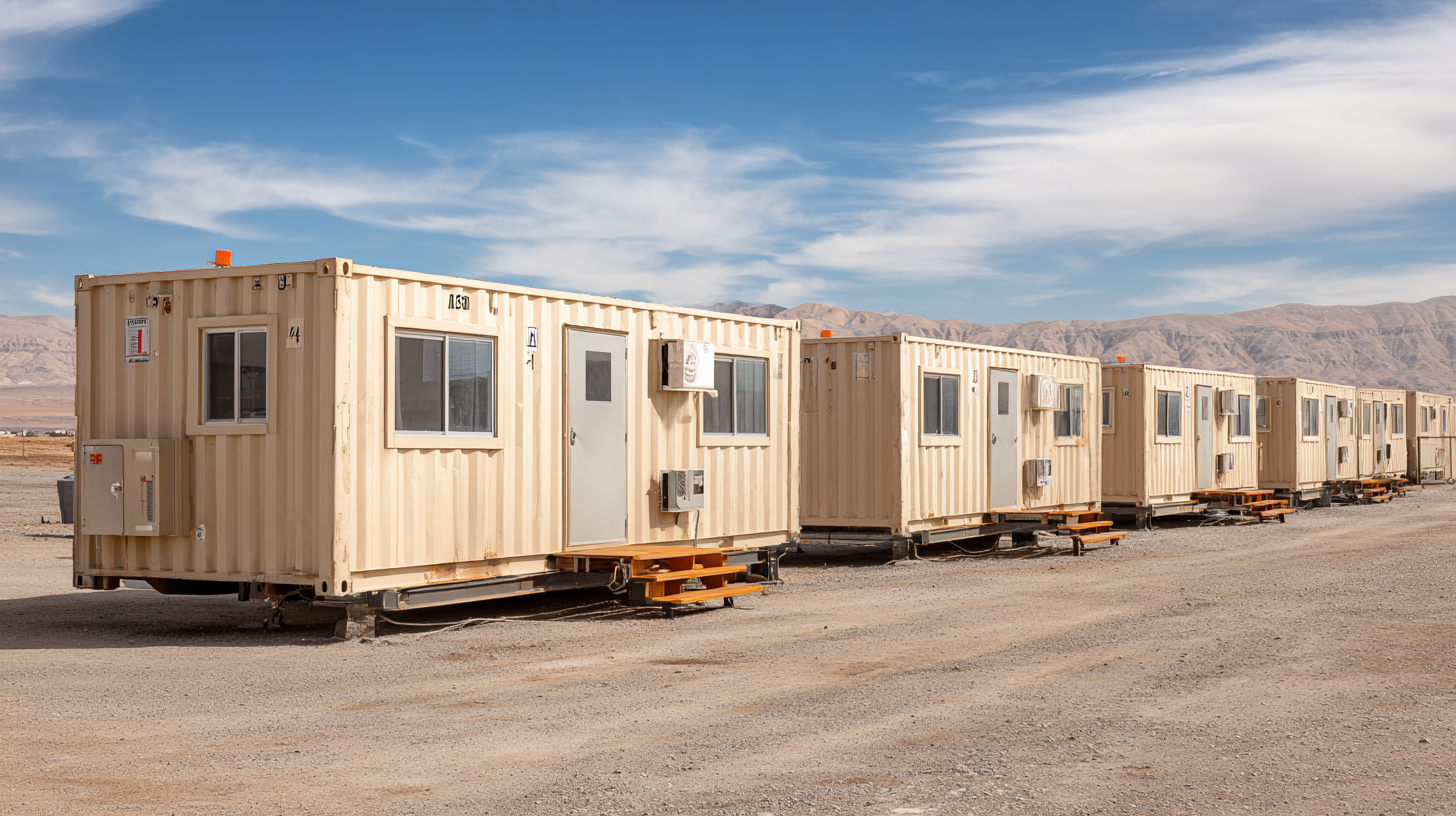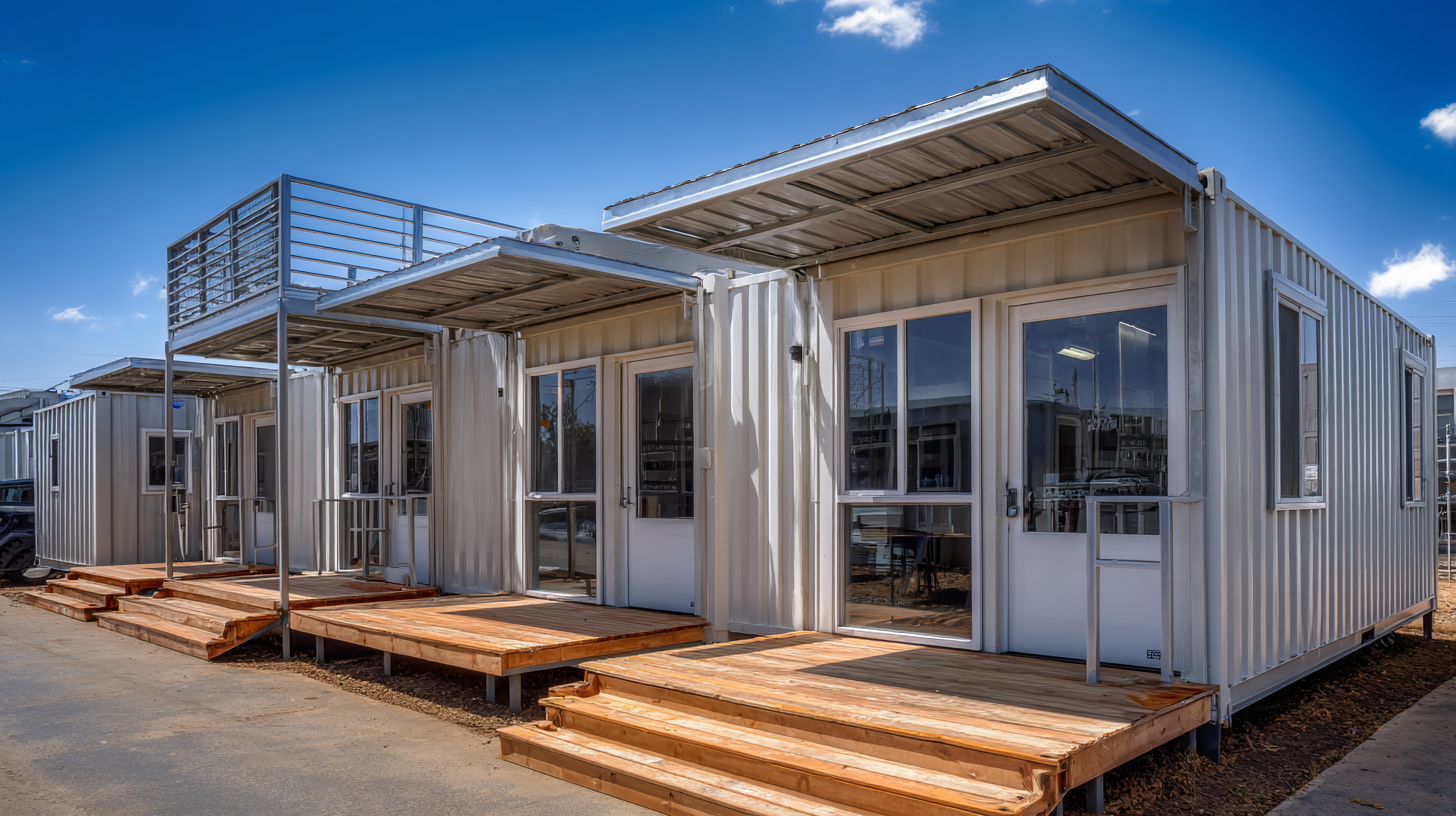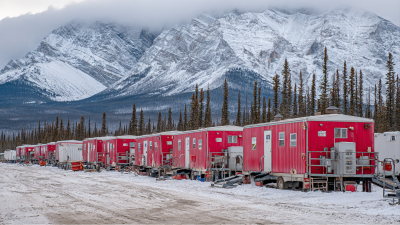 In an era where efficient use of space is paramount,
"Container Camps" have emerged as a pivotal solution
for various industries, including construction, disaster relief, and remote work environments.
According to a report by MarketsandMarkets, the modular construction market,
which encompasses container camp solutions, is projected to reach USD 157.2 billion by 2023,
growing at a CAGR of 6.2%. This growth underscores the
increasing demand for flexible, sustainable, and cost-effective
alternatives to traditional building methods.
Container Camps not only maximize the use of limited space
but also offer quick deployment and easy customization, making them ideal for temporary housing and operational facilities.
As organizations strive to optimize their spatial resources, leveraging
Container Camps represents both a practical and innovative approach
to overcoming space challenges in various contexts.
In an era where efficient use of space is paramount,
"Container Camps" have emerged as a pivotal solution
for various industries, including construction, disaster relief, and remote work environments.
According to a report by MarketsandMarkets, the modular construction market,
which encompasses container camp solutions, is projected to reach USD 157.2 billion by 2023,
growing at a CAGR of 6.2%. This growth underscores the
increasing demand for flexible, sustainable, and cost-effective
alternatives to traditional building methods.
Container Camps not only maximize the use of limited space
but also offer quick deployment and easy customization, making them ideal for temporary housing and operational facilities.
As organizations strive to optimize their spatial resources, leveraging
Container Camps represents both a practical and innovative approach
to overcoming space challenges in various contexts.
Container camps are rapidly becoming a practical solution for space optimization in various sectors, from housing to emergency relief. Understanding the benefits and applications of container camps can help organizations maximize their operational efficiency while addressing pressing challenges. For instance, the global modular container market, valued at approximately USD 26.25 billion in 2021, is projected to grow at a CAGR of 7.5% through 2030, highlighting the increasing demand for innovative space solutions.
One of the primary benefits of container camps is their eco-friendliness. By repurposing shipping containers, we can significantly reduce construction waste and promote sustainable living. This method has been particularly effective in areas facing housing crises, as seen in places like South Africa and Canada, where container homes provide affordable and rapid solutions for housing shortages.
**Tips for Optimizing Space with Container Camps:**
1. **Design Flexibly**: Leverage modular designs that allow for easy expansion or rearrangement as needs change.
2. **Utilize Vertical Space**: Stacking containers can maximize limited land areas while providing ample space for various utilities.
3. **Incorporate Sustainable Practices**: Use eco-friendly insulation and solar panels to enhance container performance and minimize energy consumption.
| Application | Benefits | Size Options (sq ft) | Typical Use Cases |
|---|---|---|---|
| Office Space | Cost-effective, flexible, and quick setup | 160 - 320 | Temporary offices, remote work sites |
| Storage Solutions | Secure, weather-resistant, and scalable | 80 - 160 | Warehouse overflow, construction sites |
| Modular Housing | Affordable, quick to install, and customizable | 320 - 640 | Temporary housing, disaster relief |
| Retail Outlets | Eye-catching, portable, and easy to modify | 160 - 320 | Pop-up shops, seasonal markets |
| Event Venues | Versatile, can be tailored for any event | 320 - 960 | Festivals, exhibitions, community events |
When designing layouts for container camps, optimizing space is crucial for enhancing functionality and usability. Efficient layouts not only facilitate smooth operations but also create a more comfortable living or working environment. To achieve this, consider the flow of movement between different areas, ensuring that essential amenities are easily accessible. Utilizing modular furniture and multi-purpose spaces can significantly maximize utility, allowing for both work and relaxation in limited areas.
Tips: Incorporate storage solutions that adapt to various needs, such as under-bed storage or wall-mounted shelves, to keep the area organized. Additionally, use light colors and reflective materials to make the space feel larger and more open. Lastly, integrate technology smartly; for instance, the latest advancements in energy-efficient data center components support not just enhanced computing capacity but also sustainability, which is increasingly important in modern spaces.
By embracing innovative design principles and making the best use of available resources, container camps can transform into efficient environments that meet the demands of contemporary living and working while ensuring maximum usability.
When it comes to maximizing space efficiently, customizing container solutions can be a game changer. Each project presents unique spatial challenges, whether it’s for residential purposes, commercial endeavors, or temporary events. By tailoring container designs to fit specific needs, you can create functional and aesthetically pleasing environments. For instance, stacking containers or modifying their layout can make the best use of vertical and horizontal space, while tailored interior fittings can enhance usability.

Additionally, the versatility of containers allows for various modifications that cater to individual requirements. This ranges from installing windows and doors for natural light and accessibility to optimizing insulation for climate control. Whether you need a pop-up retail space, a mobile office, or compact living quarters, customizing the containers ensures that they serve your precise intentions while adhering to local regulations. By focusing on these unique needs, container solutions can transform conventional ideas of space utilization into innovative and practical applications.
Container camps have emerged as a flexible and efficient solution for various deployment needs, particularly in remote and temporary settings. Incorporating sustainable practices in these deployments not only enhances environmental responsibility but also improves operational efficiency. According to a report by the Global Sustainable Construction Council, building with container-based solutions can reduce carbon emissions by up to 40% compared to traditional construction methods. This significant reduction underscores the value of adopting eco-friendly materials and energy-efficient designs in container camp projects.
When planning a container camp, consider integrating renewable energy sources, such as solar panels, to power your installations. This not only minimizes the ecological footprint but can also reduce long-term operational costs. Additionally, utilizing recycled materials for furniture and fixtures can further enhance sustainability efforts.
**Tips:**
- Invest in modular designs that allow for easy reassembly and reuse across different locations, contributing to a circular economy.
- Implement water management systems to recycle greywater for non-potable uses, thus conserving valuable resources in challenging environments.
By centering sustainable practices in container camp deployments, organizations can fulfill their commitments to environmental stewardship while also enhancing the practicality of their operations.
This chart displays the effectiveness of different sustainable practices incorporated into container camp deployments, highlighting the reduction in waste and energy usage over a five-year period.
Container living spaces are becoming a popular choice for those seeking innovative housing solutions that combine comfort and functionality. With the global market for portable modular buildings projected to reach $69.3 billion by 2027, it’s clear that container camps are not just a temporary fix but a long-term lifestyle choice. By utilizing flexible layouts and modern design principles, these spaces can be transformed into cozy, efficient homes while maximizing every square foot.

To enhance comfort in container living, integrating multifunctional furniture is key. According to a report by Allied Market Research, the demand for space-saving furniture will grow by 6.4% annually over the next few years. This highlights the shift towards practicality in design, allowing homeowners to create spaces that serve multiple purposes without sacrificing aesthetics. Furthermore, adjustable lighting and smart home technology can enhance functionality, creating a warm environment that adapts to various needs throughout the day. By focusing on these elements, container camps can provide a harmonious living experience that prioritizes both comfort and livability.






